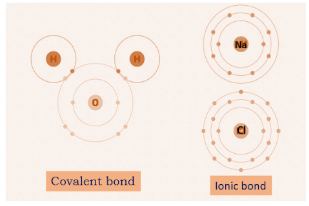Assertion & Reason Test: Chemical Bonding & Molecular Structure - NEET MCQ
7 Questions MCQ Test - Assertion & Reason Test: Chemical Bonding & Molecular Structure
In the following question, a statement of Assertion (A) followed by a statement of Reason (R) is given.
Choose the correct option out of the choices given below each question.
Assertion (A): Though the central atom of both NH3 and H2O molecules are sp3 hybridised, yet H–N–H bond angle is greater than that of H–O–H.
Reason (R): This is because nitrogen atom has one lone pair and oxygen atom has two lone pairs.
In the following question, a statement of Assertion (A) followed by a statement of Reason (R) is given.
Choose the correct option out of the choices given below each question.
Assertion (A): Crystals of hydrated calcium sulphate (gypsum: CaSO4, 2H2O) are soft and easily cleaved.
Reason(B): Crystals of anhydrous calcium sulphate (anhydrite: CaSO4) are very hard and very difficult to cleave.
| 1 Crore+ students have signed up on EduRev. Have you? Download the App |
In the following question, a statement of Assertion (A) followed by a statement of Reason (R) is given.
Choose the correct option out of the choices given below each question.
Assertion (A): The dipole moment helps to predict whether molecule is polar or non-polar
Reason (R): The dipole moment helps to predict the geometry of molecules.
In the following question, a statement of Assertion (A) followed by a statement of Reason (R) is given.
Choose the correct option out of the choices given below each question.
Assertion (A): Sodium chloride formed by the action of chlorine gas on sodium metal is a stable compound.
Reason (R): This is because sodium and chloride ions acquire octet in sodium chloride formation.
In the following question, a statement of Assertion (A) followed by a statement of Reason (R) is given.
Choose the correct option out of the choices given below each question.
Assertion (A): Ionic bonds are always stronger than covalent bonds.
Reason(B): They break only when bombarded with electrons.
In the following question, a statement of Assertion (A) followed by a statement of Reason (R) is given.
Choose the correct option out of the choices given below each question.
Assertion (A): Among the two O–H bonds in H2O molecule, the energy required to break the first O–H bond and the other O–H bond is the same.
Reason (R): This is because the electronic environment around oxygen is the same even after breakage of one O–H bond.
In the following question, a statement of Assertion (A) followed by a statement of Reason (R) is given.
Choose the correct option out of the choices given below each question.
Assertion (A): NO+ and CN- both have same bond order and magnetism
Reason(B): NO+ and CN- are isoelectornic species.


















